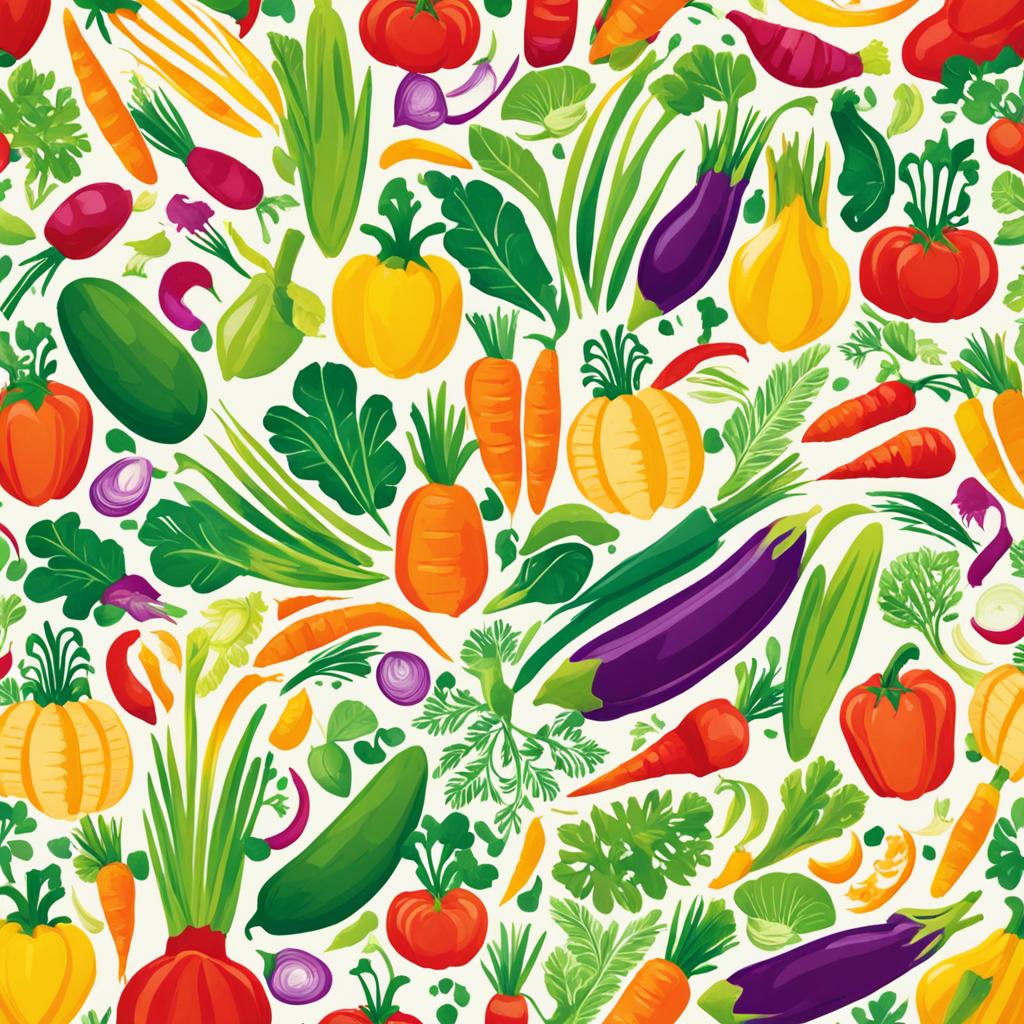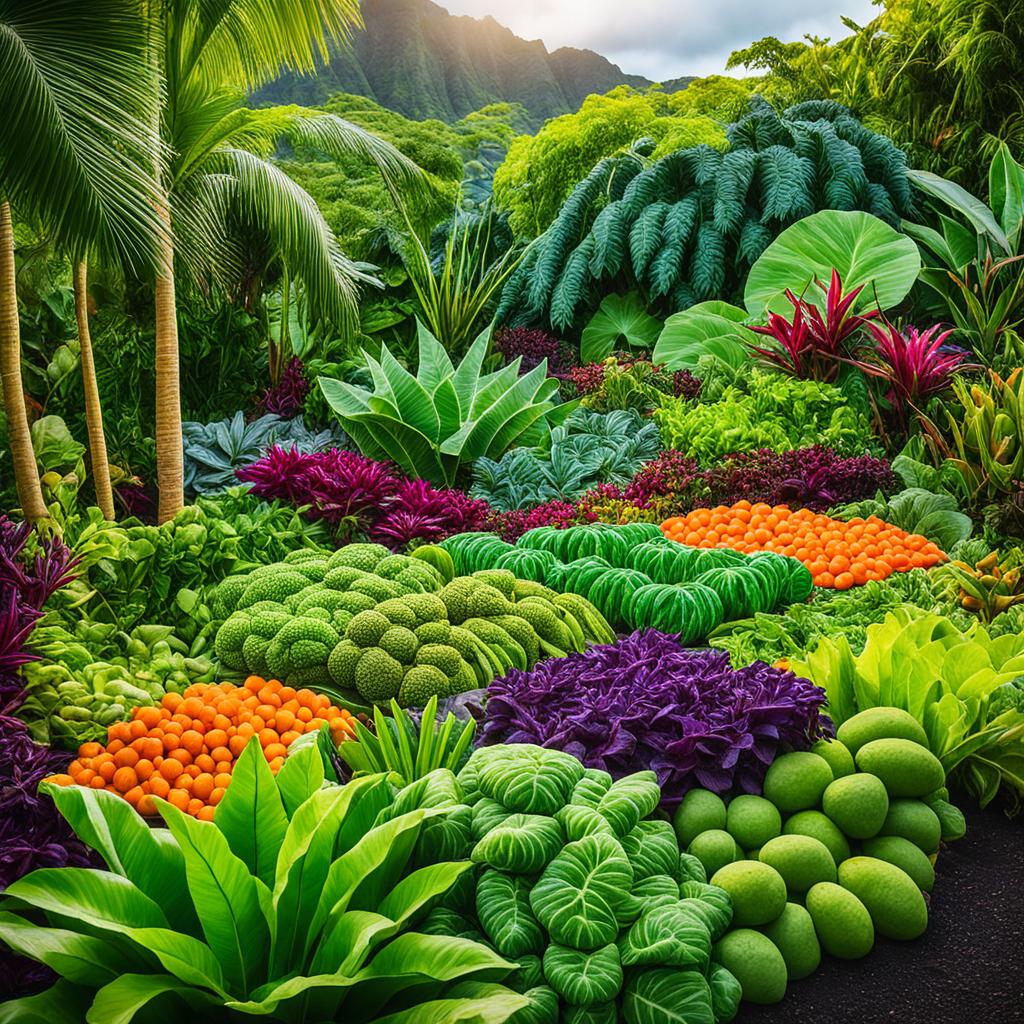When you think of Hawaiian cuisine, you may imagine tropical fruits and seafood dishes, but did you know that the islands are also home to a variety of native vegetables? These indigenous plants have played a significant role in Hawaiian culture and have shaped the unique flavors of the local cuisine. So, which vegetables are actually native to Hawaii? Let’s explore the rich history and culinary traditions that give the Hawaiian cuisine its distinct identity.
From taro to sweet potatoes, discover the indigenous plants and animals that have been an integral part of Hawaiian food culture for centuries. Dive into the fascinating history of Hawaiian cuisine and the staple ingredients that have stood the test of time. Uncover the secrets of traditional Hawaiian feasts and explore the vibrant flavors that make these festivals and special occasions so remarkable. Get ready to tantalize your taste buds and discover a whole new world of flavors with vegetables native to Hawaii.
History of Hawaiian Cuisine

The earliest Polynesian seafarers arrived in Hawaii between 300-500 AD and brought with them a variety of food-producing plants. These Polynesian voyagers played a significant role in shaping the cuisine of the islands, introducing both indigenous and non-native species.
One of the most important introductions was taro, a versatile plant that became the main staple of the Hawaiian diet. Taro, also known as kalo, is highly valued for its nutritional content and cultural significance. It is used to make poi, a traditional dish made by pounding steamed taro roots into a smooth paste. Taro leaves are also used to make laulau, a dish where meat or fish is wrapped in the leaves and steamed.
In addition to taro, the Polynesian voyagers also introduced other food-producing plants that are now deeply ingrained in Hawaiian cuisine. Sweet potatoes, yams, breadfruit, coconuts, and sugarcane were among the crops they brought to the islands. These plants not only provided sustenance but also enriched the culinary landscape of Hawaii.
The early Hawaiian diet was diverse, incorporating a wide range of seafood and sweet potatoes. Fish and other seafood, such as octopus and sea urchin, were abundant and a primary source of protein.
The arrival of non-native species, including pigs, chickens, and dogs, also influenced Hawaiian cuisine. These animals were brought to the islands for their meat, contributing to the overall culinary traditions.
While the Polynesian voyagers greatly enriched Hawaiian cuisine, their introduction of non-native species may have had unintended consequences. Some birds, plants, and land snails became extinct due to competition or predation by these non-native species.
Overall, the history of Hawaiian cuisine is a testament to the diversity and cultural exchange that shaped the culinary traditions of the islands. Today, Hawaiian cuisine continues to celebrate its roots while embracing new influences and flavors.
Culinary and Cultural Traditions

Traditional Hawaiian cuisine is deeply rooted in the cultural traditions of the Native Hawaiians. The food not only sustains the body but also has symbolic and spiritual significance. Let’s explore some of the culinary and cultural traditions that make Hawaiian cuisine unique.
Awa (Kava)
Awa, also known as Kava, is a traditional Polynesian drink that holds a special place in Hawaiian culture. Made from the roots of the Piper methysticum plant, awa is known for its calming and relaxing effects. It is often consumed during social gatherings, ceremonies, and important events. Awa drinking sessions foster bonding and a sense of togetherness among the community.
Pa’akai (Salt)
Pa’akai, or salt, plays a vital role as a condiment in Hawaiian cuisine. Traditionally harvested from salt beds near coastal areas, pa’akai was used to enhance the flavor of various dishes. The process of salt-making in Hawaii involves evaporating seawater by natural means, resulting in high-quality, unrefined salt. The distinct taste of pa’akai adds a unique flavor profile to traditional Hawaiian dishes.
Imu Cooking
Imu cooking is a traditional Hawaiian method of cooking food in an underground oven. The imu is a pit that is lined with rocks and heated with wood. Once the rocks reach the desired temperature, the food is placed in the imu and covered with banana leaves and wet cloth. The heat from the rocks and the steam created inside the imu cook the food slowly, infusing it with rich flavors. Imu cooking is often reserved for special occasions and is a labor-intensive process that requires skill and patience.
It is a communal activity where the entire family or community comes together to prepare and enjoy the feast.
| Traditional Relishes and Condiments | Description |
|---|---|
| Inamona | A mixture of roasted and mashed kukui nutmeats and sea salt. It adds a nutty and savory flavor to dishes. |
| Limu | A variety of seaweed that is used as a condiment and adds a unique umami taste to food. |
In addition to the traditional relishes and condiments, other ingredients like chili peppers, taro leaves, and coconut milk are used to enhance the flavors of Hawaiian dishes.
The culinary and cultural traditions of Hawaii are deeply intertwined, making the food not just a source of sustenance but also a way to connect with the rich history and traditions of the islands. From the ceremonial preparation of awa to the flavors infused through imu cooking, every bite of traditional Hawaiian cuisine tells a story of the land and its people.
Staple Ingredients in Hawaiian Cuisine

Hawaiian cuisine boasts a diverse range of staple ingredients that form the foundation of traditional dishes. These ingredients include taro, sweet potatoes, breadfruit, and an abundance of fish and seafood. Let’s delve into each of these essential elements of Hawaiian cuisine:
| Ingredient | Description |
|---|---|
| Taro (Kalo) | Taro, also known as kalo, is the primary staple food in Hawaiian cuisine. It is grown in terraced mud patches called lo’i kalo. Taro can be steamed, eaten in chunks, or pounded into pa’iai or poi, a traditional Hawaiian dish. |
| Sweet Potatoes (Uala) | Sweet potatoes, or uala, were introduced by the Polynesians and have become another important staple crop in Hawaii. They are versatile and can be prepared in various ways, including roasted, mashed, or used in traditional dishes. |
| Breadfruit (Ulu) | Breadfruit, or ulu, is another staple crop that was brought to Hawaii. It is a large green fruit with a starchy texture, often used in savory dishes as a substitute for rice or potatoes. Breadfruit can be baked, fried, or boiled. |
| Fish and Seafood | Hawaiian cuisine is renowned for its abundant fish and seafood options. From the freshest catch of the day to delicacies like octopus and sea urchin, these marine delights are a testament to the ocean’s bounty. Fish and seafood are often enjoyed raw, marinated, or seasoned with sea salt and seaweed. |
Hawaiian cuisine celebrates the rich flavors and ingredients native to the islands, showcasing the deep connection between the land and the ocean. The combination of taro, sweet potatoes, breadfruit, and fish and seafood captures the essence of traditional Hawaiian culinary heritage.
Next, let’s explore the vibrant festivals and special occasions where these staple ingredients take center stage in the form of delicious traditional dishes.
Festivals and Special Occasions
On important occasions, you’ll find traditional Hawaiian feasts known as luaus. These festive gatherings are a celebration of Hawaiian culture and cuisine, bringing people together to enjoy a traditional Hawaiian feast.
One of the highlights of a luau is the kalua pig, a savory dish that is cooked underground in an imu, an earth oven. The pig is seasoned with Hawaiian sea salt and slow-roasted to perfection, resulting in tender and flavorful meat that is a crowd favorite.
No luau is complete without lū’au, a delicious dish made with coconut milk and taro leaves. The combination of these ingredients creates a creamy and satisfying dish that perfectly complements the other flavors of the feast.
For dessert, you can indulge in haupia, a delightful coconut milk-based dessert. This sweet treat is usually served in the form of squares and has a creamy and smooth texture that is sure to please your taste buds.
And of course, no Hawaiian feast is complete without poke. This popular dish consists of raw, marinated fish or seafood salad, typically made with fresh ahi tuna. The flavors are bold and vibrant, making it a favorite among seafood lovers.
Whether you’re attending a luau or celebrating a special occasion in Hawaii, be sure to savor these traditional dishes that are deeply rooted in Hawaiian culture and cuisine.
FAQ
Q: What vegetables are native to Hawaii?
A: The native Hawaiian cuisine consists of a mix of indigenous plants and animals as well as plants and animals introduced by Polynesian voyagers. The most important native vegetable is taro, also known as kalo, which is a staple in Hawaiian cuisine. Other vegetables introduced by the Polynesian voyagers include sweet potatoes, yams, breadfruit, coconuts, and sugarcane.
Q: What is the history of Hawaiian cuisine?
A: The history of Hawaiian cuisine dates back to the arrival of Polynesian voyagers in Hawaii between 300-500 AD. These voyagers brought various food-producing plants with them, including taro, which became the main staple of the Hawaiian diet. The cuisine also incorporates other introduced vegetables such as sweet potatoes, yams, breadfruit, coconuts, and sugarcane. Fish, shellfish, and seaweed were abundant in Hawaii and added to the diversity of the Hawaiian diet.
Q: What are the culinary and cultural traditions associated with Hawaiian cuisine?
A: Traditional Hawaiian cuisine is closely tied to the cultural traditions of the Native Hawaiians. Awa (kava) is a traditional Polynesian drink still consumed by Hawaiians today. Pa’akai, or salt, was an important condiment in Hawaiian cuisine. Meals were traditionally cooked by men, and food for women was cooked in a separate imu, an underground oven made by burying food with hot rocks and banana wood. Poi, made from taro, is a staple food in Hawaiian cuisine. Traditional relishes and condiments included inamona, a mixture of roasted and mashed kukui nutmeats and sea salt, and limu, or seaweed.
Q: What are the staple ingredients in Hawaiian cuisine?
A: The primary staple food in traditional Hawaiian cuisine is taro, also known as kalo. It is grown in terraced mud patches called lo’i kalo and can be steamed, eaten in chunks, or pounded into pa’iai or poi. Sweet potatoes, or uala, are another important staple crop introduced by the Polynesians. Breadfruit, or ulu, is the third staple crop that was brought to Hawaii. Fish and other seafood, such as octopus and sea urchin, were also a major part of the Hawaiian diet. They were often eaten raw or seasoned with sea salt and seaweed.
Q: What are the festivals and special occasions associated with Hawaiian cuisine?
A: Traditional Hawaiian feasts, known as luaus, are held on important occasions. These feasts include a variety of traditional dishes such as kalua pig, which is cooked underground in an imu. Lū’au is a dish made with coconut milk and taro leaves. Haupia is a coconut milk-based dessert, while poke is a raw marinated fish or seafood salad. These dishes are still enjoyed at luaus and other special occasions in Hawaii today.
